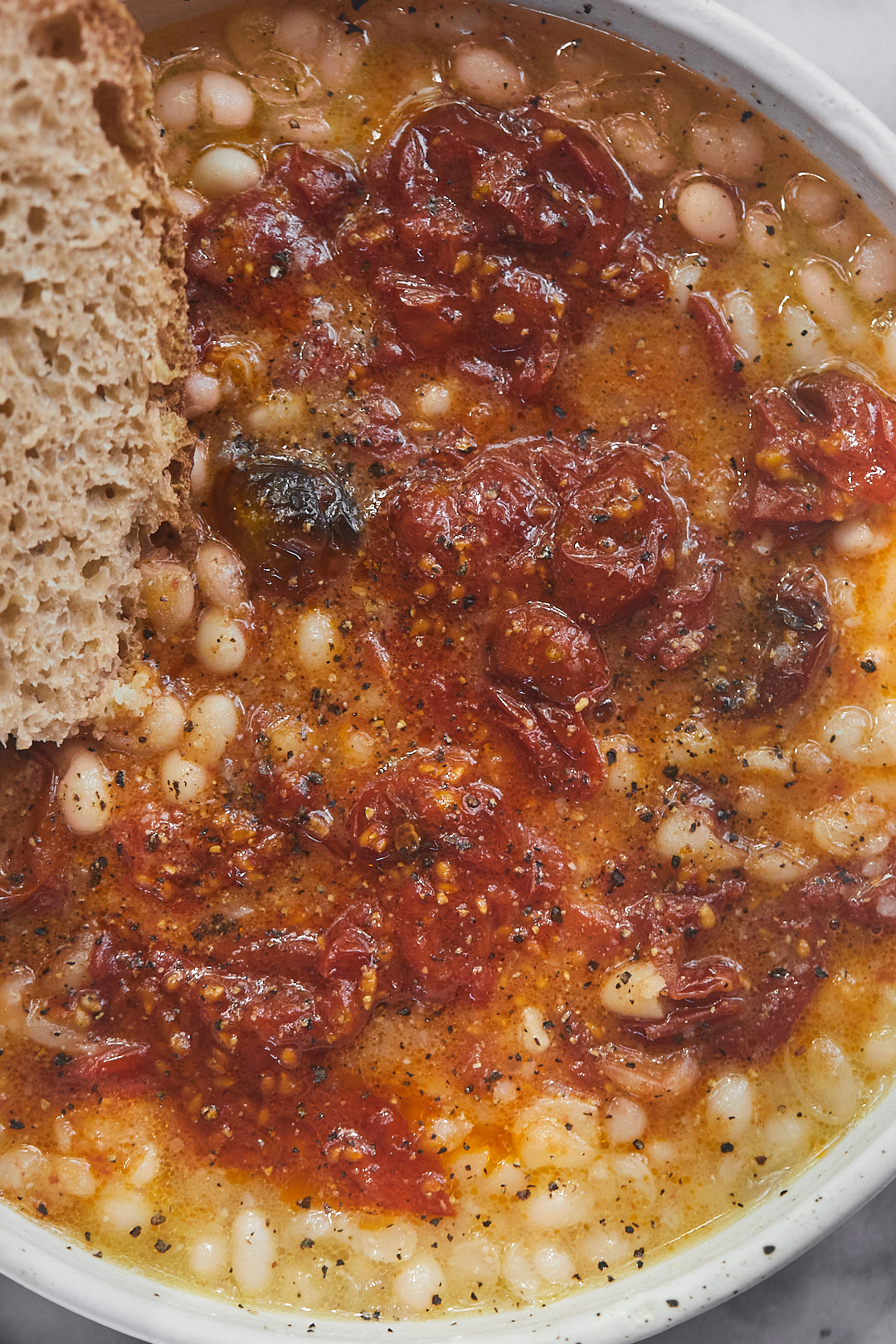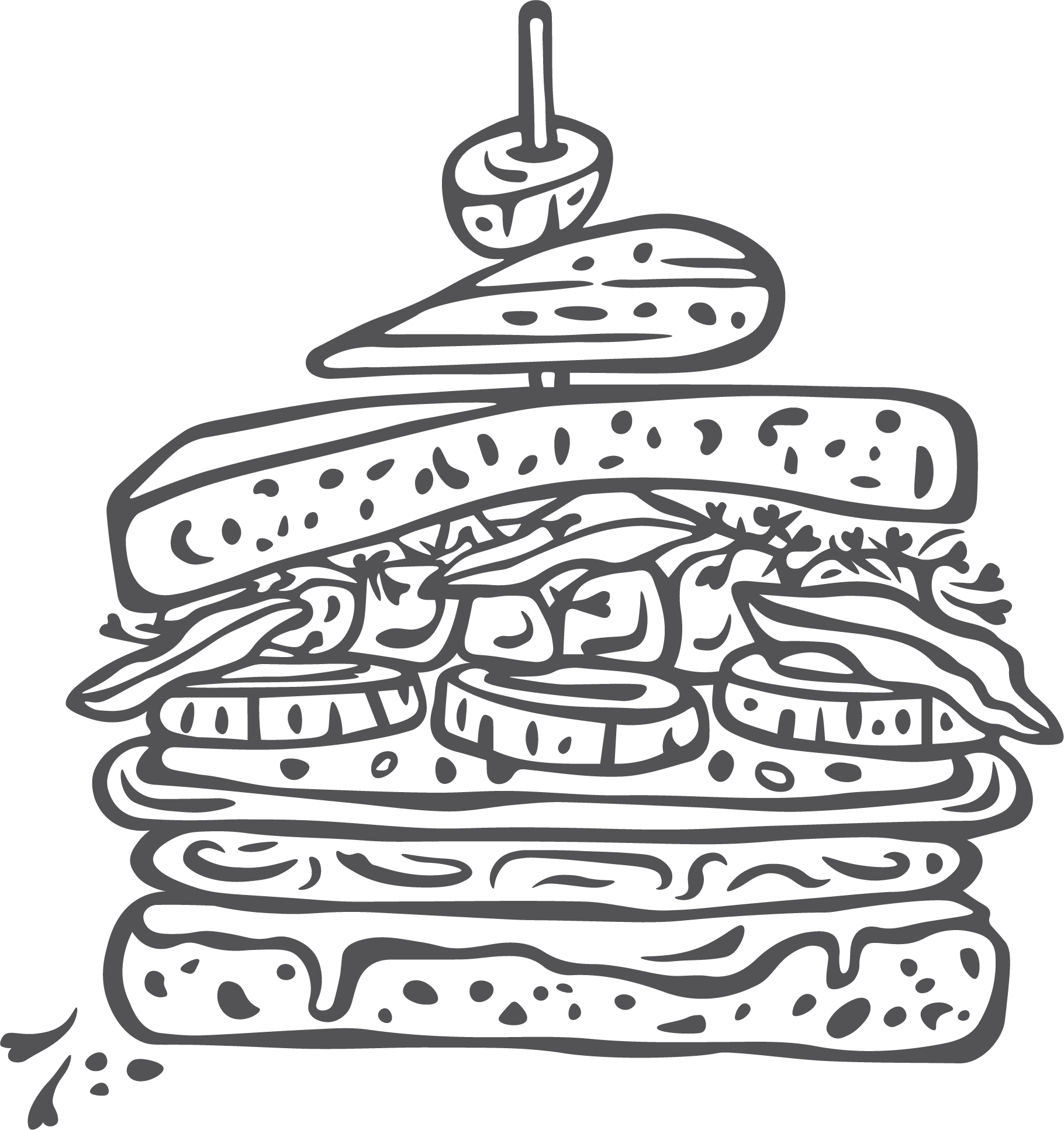When it comes to beans, people often feel like they need to be extra, paired with many ingredients, and fussed over—often feeling that beans have no flavor. However, when given just a bit of love (like in these brothy beans), the taste and texture of the beans are unmatched.
Cooking beans for me is a duel effort: cooked beans and the broth. We often overlook the flavor of beans and their broth because canned beans typically only contain a bit of sodium. But when cooking from dry, you can make something you could eat immediately.
While beans have a lovely flavor, they can quickly soak up bonus flavor. As such, my best advice when making brothy beans is to think of it as a parallel process. You’re making a broth, and you’re cooking beans. We want a liquid that tastes delicious and beans that have soaked up the flavor.
Because of this, you can play around with flavor. Add herbs, an assortment of vegetables, plenty of salt, and a glug of oil. However, save any acidic items to finish the dish. Beans consist primarily of salt-water-soluble proteins that may seize when in contact with acid. This reaction can cause tough, hard beans even after cooking for an ample amount of time.
When making a broth, you may see instructions on precooking the alliums or vegetables before adding them to the pot. This extra step could include searing, broiling, grilling, or smoking. Each method alters the flavors of the alliums and vegetables, ultimately yielding a more complex broth.
Searing, broiling, or grilling triggers the Maillard reaction, causing the sugars and proteins within any given item to react. When I make broths, this typically includes onions, leeks, garlic, carrots, celery, mushrooms, corn, and/or tomatoes.
By giving these items a little char, you can create layers of more complex flavor in your broth, which ultimately means more flavor in your beans.
Smoking vegetables and alliums ahead of time results in a smoky flavor to the broth.
Finally, don’t rush things! The broth and the beans benefit from low and slow cooking time. The extra time allows the broth flavor to develop. As for the beans, the extra time and lower temperature help even the more tender beans hold their shape.

One of the charming bits of this recipe is that you can make it with any bean. However, the type of bean you choose has a visual and sensory impact on the final dish. I may be the only person who cares, but both are worthy of a note!
What small beans lack in size, they make up for overall impact. Small beans, such as a tiny navy or alubia blanca bean, may seem diminutive, but that’s their charm. Given that everything melds together, I think the smaller beans convey a sense of nourishment.
Plus, using the smaller beans means distributing flavors easier as these beans are less dense.
I usually have some medium everyday beans cooked on hand. You can make a modified version of this dish by using what you may already have on hand, like a pinto or chickpea. Start the broth ahead of time to develop the flavor, then add the beans and cook over low.
Of course, other medium beans are big on flavor, making them perfect for a meal like this. My favorites are Bayo beans (from Primary Beans) or Buckeye beans (from Rancho Gordo).
Finally, if you want to make this meal and have it be a statement, I highly recommend large beans! I like to use Gigante or Royal Corona for a job like this. These beans take up space and make you feel like you’re eating something filling.
I suggest a simple serving companion of sliced toast; however, these beans serve as an excellent base upon which you can expand.
I like to use these brothy beans as a soup-like meal, paired with grilled cheese for dipping. I also adore this cheese toast with caramelized onion and a bit of mustard–both making good companions for these beans.
While the base recipe has roasted tomatoes, you can also add to it. I like to stir in shredded spinach, kale, or chard towards the end of cooking. You can also give the meal a bit of freshness by topping with some lightly dressed greens–arugula with a bit of lemon and olive oil is perfect.
This is probably one of many recipes to which I suggest adding something fried as a finish—I love the crunch! Fry leftover grains for bits of crispy texture pops, or finish with a flurry of fried shallots or garlic. The fried alliums add a nice bit of crunch and flavor.
These brothy beans make a great companion to cooked grains. I prefer to have a side of grains that I can eat along with the beans. You can also bulk up the recipe and add the grains right in with the beans and broth.
To change the flavor, use one of the variations with the roasted tomatoes. I adore using chile paste or ground chile in place of the black pepper to add a bit of heat to the beans. You can also load up on herbs, like dill or fresh basil.



Made this tonight and it was really good. I used homemade navy beans that I cooked the day before, as I did the roasted tomatoes so it came together quickly for dinner.
I used less miso- I quadrupled the recipe so I used 3T instead of 4- it would've been too salty with the full amount. So I suggest starting with a lesser amount of miso and doing it to taste.
Thanks for the great recipe!
We enjoyed this. I made it with canned beans. Sautéed onion and garlic and made a miso-veg broth. Thanks